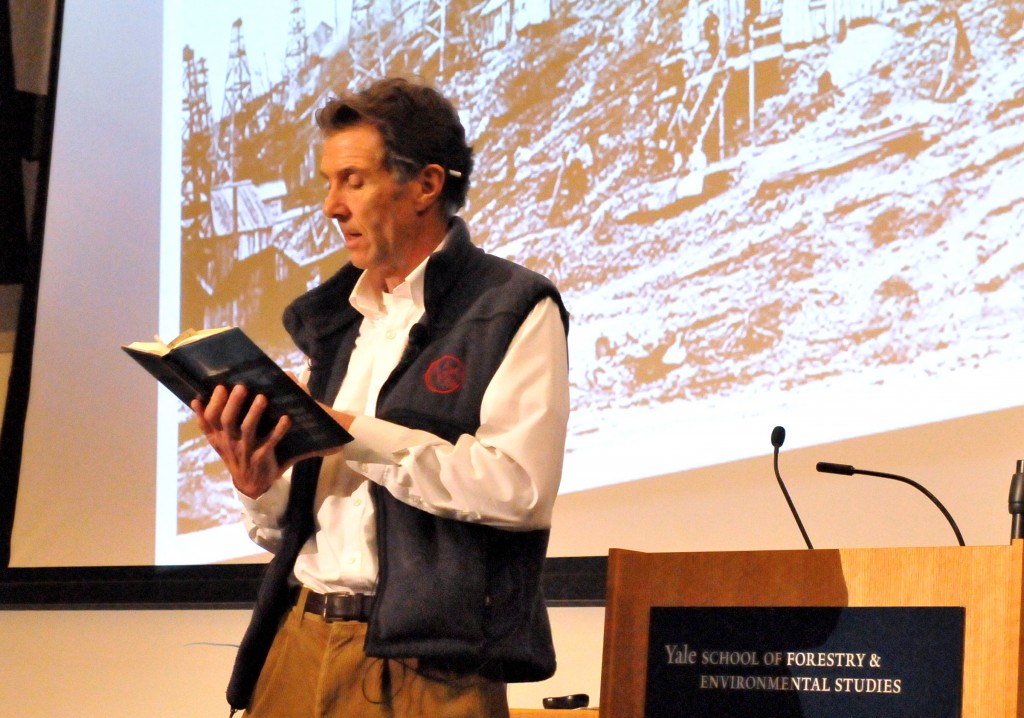
- In “Under the Surface,” Tom Wilber takes a long, hard look at the Marcellus Shale.
Journalist Tom Wilber, speaking on a chilly Thursday evening in November, began his talk with a question he would refuse to answer: should we frack?
As Wilber explained, most journalists exploring the divisive issue of hydraulic fracturing have decided to choose one side or the other. Yet Wilber, in his new book Under the Surface: Fracking, Fortunes, and the Fate of the Marcellus Shale, declines to take a side, adhering to the belief that preserving his neutrality will enhance his integrity.
His objective position allows him to interview and speak to a great diversity of interested parties, from drillers to politicians to landowners at public meetings. This access also makes his book far more compelling than other tomes about fracking, as he’s able to shed light on multiple perspectives, often juxtaposing interview subjects that disagree with one another.
During his recent talk, Wilber articulated a nuanced understanding of the complexities of shale gas development. His grasp of the community factors, as well as the priorities of the neighbors of fracking wells, was impressive. He also demonstrated the ability to lucidly translate the scientific jargon of oil and gas extraction for the non-scientific community – a vital responsibility for any science journalist.
Here in the Northeast, many of us fail to appreciate our easy energy sources; we take for granted the ability to flip on a light or heat our homes. We don’t want to look closely at how our energy is produced – especially when it’s generated on the backs of other states and other countries, often in a dirty and environmentally reprehensible fashion. For years the Northeast has powered its cities and its homes with coal and nuclear power – energy sources which have clear links to negative environmental and health consequences – with very little talk about these impacts.
Yet fracking has suddenly brought energy back to the forefront of our conversations. It has forced New York City to think about its energy usage, and contemplate how oil and gas drilling could affect their drinking water source. And the debate’s implications reach well beyond the Big Apple. As Tom Wilber pointed out, if fracking is too grave a risk for New York City’s drinking water to face, why should other water sources face it as well?
Wilber’s book provides a strong overview of the numerous issues that natural gas extraction, especially near households and in residential areas, raise for this country. His neutral position is an unusual and refreshing one among journalists. Although the reader’s inclination is to want him to choose a side in the fracking debate – to give us the answer and help us clear a path for our energy future – he steadfastly refuses to compromise his impartiality. Instead, he blends facts and data with powerful anecdotes to present a comprehensive and unbiased picture of fracking in America. We, as a nation, are confronted by a variety of possible energy pathways. Which will we choose?
To read more from Vanessa Lamers about the issues that surround fracking, see her recent article “Solutions from the Gas Fields.”